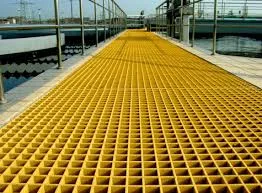
-
 Afrikaans
Afrikaans -
 Albanian
Albanian -
 Amharic
Amharic -
 Arabic
Arabic -
 Armenian
Armenian -
 Azerbaijani
Azerbaijani -
 Basque
Basque -
 Belarusian
Belarusian -
 Bengali
Bengali -
 Bosnian
Bosnian -
 Bulgarian
Bulgarian -
 Catalan
Catalan -
 Cebuano
Cebuano -
 China
China -
 China (Taiwan)
China (Taiwan) -
 Corsican
Corsican -
 Croatian
Croatian -
 Czech
Czech -
 Danish
Danish -
 Dutch
Dutch -
 English
English -
 Esperanto
Esperanto -
 Estonian
Estonian -
 Finnish
Finnish -
 French
French -
 Frisian
Frisian -
 Galician
Galician -
 Georgian
Georgian -
 German
German -
 Greek
Greek -
 Gujarati
Gujarati -
 Haitian Creole
Haitian Creole -
 hausa
hausa -
 hawaiian
hawaiian -
 Hebrew
Hebrew -
 Hindi
Hindi -
 Miao
Miao -
 Hungarian
Hungarian -
 Icelandic
Icelandic -
 igbo
igbo -
 Indonesian
Indonesian -
 irish
irish -
 Italian
Italian -
 Japanese
Japanese -
 Javanese
Javanese -
 Kannada
Kannada -
 kazakh
kazakh -
 Khmer
Khmer -
 Rwandese
Rwandese -
 Korean
Korean -
 Kurdish
Kurdish -
 Kyrgyz
Kyrgyz -
 Lao
Lao -
 Latin
Latin -
 Latvian
Latvian -
 Lithuanian
Lithuanian -
 Luxembourgish
Luxembourgish -
 Macedonian
Macedonian -
 Malgashi
Malgashi -
 Malay
Malay -
 Malayalam
Malayalam -
 Maltese
Maltese -
 Maori
Maori -
 Marathi
Marathi -
 Mongolian
Mongolian -
 Myanmar
Myanmar -
 Nepali
Nepali -
 Norwegian
Norwegian -
 Norwegian
Norwegian -
 Occitan
Occitan -
 Pashto
Pashto -
 Persian
Persian -
 Polish
Polish -
 Portuguese
Portuguese -
 Punjabi
Punjabi -
 Romanian
Romanian -
 Russian
Russian -
 Samoan
Samoan -
 Scottish Gaelic
Scottish Gaelic -
 Serbian
Serbian -
 Sesotho
Sesotho -
 Shona
Shona -
 Sindhi
Sindhi -
 Sinhala
Sinhala -
 Slovak
Slovak -
 Slovenian
Slovenian -
 Somali
Somali -
 Spanish
Spanish -
 Sundanese
Sundanese -
 Swahili
Swahili -
 Swedish
Swedish -
 Tagalog
Tagalog -
 Tajik
Tajik -
 Tamil
Tamil -
 Tatar
Tatar -
 Telugu
Telugu -
 Thai
Thai -
 Turkish
Turkish -
 Turkmen
Turkmen -
 Ukrainian
Ukrainian -
 Urdu
Urdu -
 Uighur
Uighur -
 Uzbek
Uzbek -
 Vietnamese
Vietnamese -
 Welsh
Welsh -
 Bantu
Bantu -
 Yiddish
Yiddish -
 Yoruba
Yoruba -
 Zulu
Zulu
FRP Trough Cover Protective Solutions for Industrial Use and Applications
Protective Solutions for Industrial Applications FRP Trough Covers
In the realm of industrial applications, the importance of effective protective solutions cannot be overstated. Among the various materials employed in this space, Fiber-Reinforced Polymer (FRP) stands out for its favorable properties such as strength, durability, and resistance to corrosion. One specific application of FRP that has gained traction is the use of FRP trough covers. These covers serve as a protective solution that addresses several critical needs within industrial environments.
What are FRP Trough Covers?
FRP trough covers are typically made from a composite material that combines polymer resin with reinforcing fibers, usually glass or carbon. This combination results in a lightweight yet sturdy product that can withstand extreme conditions. Trough covers are designed to shield various open containers, channels, or troughs commonly found in industrial processes, such as those related to wastewater management, chemical processing, and even food production.
The Advantages of FRP Trough Covers
1. Corrosion Resistance One of the primary advantages of FRP trough covers is their exceptional resistance to corrosion. In many industrial settings, troughs often contain aggressive chemicals or are exposed to harsh environmental conditions. Unlike traditional materials like steel or aluminum, which can rust or corrode over time, FRP can resist chemical attacks, ensuring a longer lifespan for the covers and the structures they protect.
2. Lightweight and Easy to Install FRP is significantly lighter than metals, making handling and installation more manageable. This weight advantage means that FRP trough covers can be implemented in places where heavier materials would be impractical, thereby reducing the labor costs associated with installation and maintenance.
frp trough cover protective solutions for industrial applications

3. Enhanced Safety Safety is a critical concern in any industrial setting. The use of FRP trough covers minimizes the risk of accidents, such as spills or unauthorized access to potentially hazardous materials. They can be designed to fit securely over troughs, thereby preventing contamination and ensuring a safer working environment.
4. Thermal Insulation FRP materials exhibit excellent thermal insulation properties. This can be particularly beneficial in applications where temperature control is crucial. By reducing heat transfer, these covers can help maintain optimal conditions within the troughs, leading to improved process efficiency and energy savings.
5. Customizability FRP trough covers can be tailored to meet specific requirements. They can be manufactured in various sizes, shapes, and thicknesses depending on the application needs. Customization also extends to performance features such as color, transparency, and load-bearing capacity, providing solutions that can be perfectly integrated into existing systems.
Applications in Industrial Settings
FRP trough covers find utility across a range of industries. In wastewater treatment facilities, for example, they protect open channels from external contaminants while providing a stable surface for maintenance personnel. In chemical processing plants, these covers can safeguard against spills and fumes, thereby enhancing workplace safety. Additionally, the food industry benefits from the hygienic properties of FRP, as these covers can be designed for easy cleaning and maintenance, ensuring compliance with health regulations.
Conclusion
In summary, FRP trough covers represent an innovative protective solution for various industrial applications. With their myriad benefits, including resistance to corrosion, lightweight design, enhanced safety, thermal insulation, and customizability, they offer a compelling alternative to traditional materials. As industries continue to embrace advanced materials and technologies, the integration of FRP solutions can lead to more efficient, safe, and cost-effective operations. The adoption of FRP trough covers stands as a testament to the ongoing evolution of protective solutions in the industrial sector, paving the way for more resilient and sustainable practices in the future.









